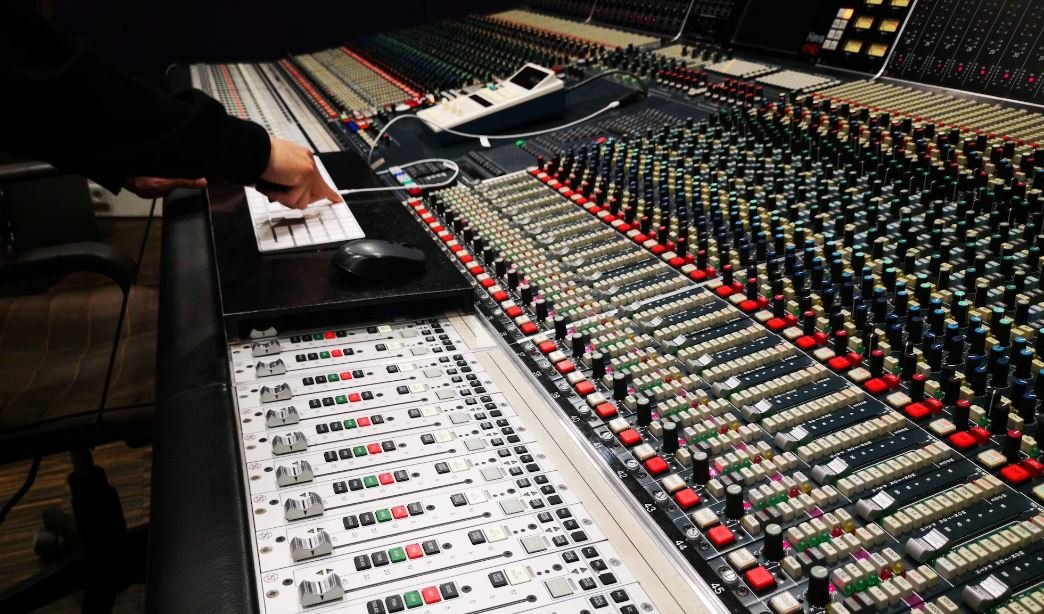Generative AI for Media
Generative Artificial Intelligence (AI) has revolutionized the way media is produced and consumed. With the ability to generate realistic and original content, AI technology is transforming various aspects of the media industry, including content creation, video production, and even advertising. In this article, we will explore the exciting possibilities of generative AI for media and delve into its potential impact on the future.
Key Takeaways
- Generative AI is transforming the media industry through content creation, video production, and advertising.
- By using AI-generated content, media organizations can save time and resources.
- The ethical implications of generative AI in media need to be carefully considered.
**Generative AI** utilizes machine learning algorithms and **neural networks** to create content that closely mimics human creativity and style. From generating articles and scripts to producing realistic deepfake videos, generative AI is capable of creating media content that often indistinguishable from human-created content.
**One interesting example** of generative AI in media is the production of AI-generated music, where AI algorithms can compose original pieces in various genres and styles. This has opened up new possibilities for musicians and artists, providing them with a wealth of creative inspiration.
Beyond music, generative AI has incredible potential in the field of video production. With AI algorithms capable of analyzing vast amounts of video footage, they can automatically compile highlight reels or even generate entire videos from scratch. This enables media organizations to deliver high-quality content at an unprecedented scale and speed.
**An intriguing application** of generative AI in video production is the ability to generate deepfake videos. Deepfake technology uses AI algorithms to manipulate or replace the face of a person in a video, creating near-perfect digital forgeries. The implications of this technology raise concerns about misinformation and privacy that must be addressed.
An area where generative AI has had a significant impact is advertising. By utilizing AI algorithms to analyze user preferences and behavior, advertisements can be personalized on a granular level. This level of customization boosts efficiency and effectiveness, delivering more relevant content to consumers. Large-scale ad campaigns can be optimized using AI algorithms to generate and test different variations, leading to better results and higher conversion rates.
**A fascinating feature** of generative AI in advertising is the ability to generate hyper-realistic product images and videos. These AI-generated visual assets can be used in advertisements, eliminating the need for costly photo shoots or video productions. This cost-saving measure enables smaller companies to compete with larger advertisers, level the playing field, and reach wider audiences.
AI in Media – A Look at the Numbers
Let’s take a closer look at some interesting statistics and data points that highlight the influence of generative AI on the media industry:
| Statistic | Data |
|---|---|
| Annual AI-generated content value | $140 billion (estimated by 2025) |
| Average time saved by media organizations using generative AI | 20-30% |
Another aspect that must be carefully considered is the ethical implications of generative AI in media. As AI algorithms become increasingly proficient at generating realistic content, there is a risk of misuse and potential for the spread of misinformation. It is essential for media organizations to be transparent about the use of AI-generated content and ensure responsible deployment.
**One ethical concern** is the use of generative AI to create deepfake videos, which can be used to manipulate public perception or cause harm. Regulation and vigilance are crucial in mitigating these risks and safeguarding against malicious intent.
Conclusion
Generative AI is reshaping the media industry in unprecedented ways. From content creation to video production and advertising, AI-driven technologies offer immense potential for efficiency and creativity. However, it is essential to consider the ethical and societal implications of this technology to ensure responsible and beneficial implementation. As AI continues to advance, the possibilities for generative AI in media are only just beginning to be explored.

Common Misconceptions
Generative AI for Media
There are several common misconceptions surrounding the topic of generative AI for media. These misconceptions often result from a lack of understanding or misinformation. It is important to debunk these misconceptions in order to have a more accurate understanding of this emerging technology.
Misconception 1: Generative AI will replace human creativity
Many people worry that generative AI for media will eventually replace human creativity and eliminate the need for artists or content creators. However, this is not the case. Generative AI is a tool that can enhance and assist human creativity, but it cannot replicate the unique insights and emotions that human beings bring to the creative process.
- Generative AI provides new avenues for inspiration and creativity.
- Human judgment and interpretation are still vital for crafting meaningful content.
- Generative AI can be used as a collaborative tool between humans and machines.
Misconception 2: Generative AI always produces high-quality content
Another misconception is that generative AI always produces high-quality content. While AI algorithms have made significant advancements, they are not infallible and can still generate flawed or irrelevant output. It is important to understand that the quality of the generated content heavily relies on the quality of the input data and the algorithm’s training.
- Quality control and human oversight are necessary to ensure the output meets desired standards.
- Garbage in, garbage out – the quality of input data impacts the quality of the output.
- Generative AI requires continuous refinement and fine-tuning to improve its output quality.
Misconception 3: Generative AI is a threat to copyright and intellectual property
There is a fear that generative AI might infringe upon copyright laws and intellectual property rights by creating content that closely resembles original work. While generative AI can mimic styles or genres, it is not capable of copying specific copyrighted works without direct input and guidance from human creators.
- Generative AI is a tool that should be used responsibly and ethically.
- Respecting and attributing original creators is still essential when using generative AI.
- Legal frameworks need to adapt to address potential copyright concerns with generative AI.
Misconception 4: Generative AI replaces the need for human involvement
Some people mistakenly believe that generative AI can operate independently without any human involvement. While AI algorithms can generate content autonomously, human involvement remains crucial in defining the objectives, overseeing the process, and making important creative decisions.
- Human guidance ensures that generative AI aligns with intended purposes and values.
- Human intervention is necessary to contextualize and interpret the generated content.
- Generative AI and humans can form a collaborative partnership for more effective outcomes.
Misconception 5: Generative AI is only applicable to the media industry
Lastly, a misconception exists that generative AI is only relevant and applicable to the media industry. While it has significant implications and applications in fields such as visual art, music, and writing, generative AI can also be utilized in various other sectors, including healthcare, finance, and manufacturing.
- Generative AI can automate complex tasks and optimize processes in multiple industries.
- Its versatility allows for problem-solving and innovation beyond traditional creative fields.
- Generative AI can augment decision-making and improve efficiency in diverse domains.

Overview of Generative AI for Media
This article explores the fascinating world of Generative Artificial Intelligence (AI) and its impact on the media industry. Generative AI refers to the use of AI algorithms to create new and original content, such as images, videos, music, and text. This groundbreaking technology has revolutionized the way media is produced, opening up endless possibilities for creative expression and enhancing human creativity. The tables below highlight key points and showcase the incredible capabilities of Generative AI in various media domains.
1. Evolution of Generative AI
| Decades | Breakthroughs |
|---|---|
| 1950s – 1960s | Early AI research begins, paving the way for future developments in generative algorithms. |
| 1990s | Introduction of the first generative adversarial network (GAN), a powerful architecture for generating realistic media content. |
| 2010s | Deep learning advancements enable the creation of highly sophisticated generative models like Variational Autoencoders (VAEs) and Transformers. |
2. Generative AI Applications in Film Industry
| Application | Benefit |
|---|---|
| Scene generation | Generative AI produces realistic environments, reducing production costs and enabling filmmakers to visually convey their vision. |
| Character design | Create unique and detailed characters more efficiently, providing diverse representation and enhancing storytelling. |
| Special effects | Generative models create stunning visual effects, pushing the boundaries of creativity and immersing audiences in extraordinary worlds. |
3. Generative AI in Music Production
| Use Case | Advantage |
|---|---|
| Music composition | Generative AI assists musicians by generating original melodies and harmonies, acting as a source of inspiration. |
| Remixing | AI algorithms remix existing tracks, offering new interpretations and enabling artists to explore different genres. |
| Production assistance | Generative AI tools aid in sound synthesis, audio mastering, and arrangement, enhancing the quality and efficiency of music production. |
4. Generative AI for News Creation
| Application | Impact |
|---|---|
| Automated article generation | AI algorithms generate news reports quickly, reducing human effort and enabling journalists to focus on investigative and in-depth journalism. |
| Data analysis | Generative AI processes vast amounts of data, extracting patterns and insights to support data-driven journalism and uncover hidden stories. |
| Fact-checking | AI-powered fact-checking tools verify information, improving the accuracy of news and combating misinformation. |
5. Generative AI in Visual Arts
| Domain | Impact |
|---|---|
| Painting | Generative AI algorithms produce remarkable artworks, blurring the line between human and machine creativity. |
| Photography | AI-enhanced image editing techniques revolutionize post-processing, enabling photographers to achieve stunning visual effects. |
| Sculpture | Generative AI aids in designing intricate and innovative sculptures, allowing artists to explore new materials and forms. |
6. Generative AI for Advertising
| Area | Benefits |
|---|---|
| Content creation | AI-powered systems generate captivating ad content that resonates with target audiences, enhancing brand engagement. |
| Personalization | Generative AI tailors advertisements to individual preferences, delivering highly personalized experiences to consumers. |
| Analyzing data | AI algorithms help in analyzing consumer trends and behaviors, enabling businesses to optimize their advertising strategies. |
7. Generative AI in Video Games
| Application | Advancement |
|---|---|
| Procedural generation | Generative AI dynamically creates game environments, ensuring endless possibilities and enhancing playability. |
| NPC behaviors | AI algorithms simulate realistic non-player characters, providing challenging and immersive gameplay experiences. |
| Dialogue systems | Generative AI enhances interactive storytelling by generating dynamic and context-aware dialogues between characters. |
8. Generative AI for Social Media Content
| Use Case | Benefits |
|---|---|
| Image generation | Generative AI automatically creates engaging visual content for social media posts, attracting and captivating users’ attention. |
| Video editing | AI-powered tools assist users in editing and enhancing videos, enabling them to produce high-quality content without extensive expertise. |
| Caption generation | Generative AI generates catchy and informative captions for social media posts, improving user engagement and reach. |
9. Generative AI in Journalism Ethics
| Ethical Issue | Solution |
|---|---|
| Misinformation spread | Implement strict verification and fact-checking protocols to ensure the accuracy of generative AI-generated content. |
| Privacy concerns | Adopt stringent data protection measures and transparent data usage policies to address privacy issues surrounding AI-generated media. |
| Ownership and attribution | Establish clear guidelines for crediting and copyright ownership of generative AI-created content to avoid plagiarism and legal disputes. |
10. The Future of Generative AI in Media
| Domain | Potential |
|---|---|
| Virtual reality | Generative AI will create immersive virtual worlds, enriching virtual reality experiences and blurring the line between reality and simulation. |
| Interactive media | AI algorithms will enable dynamic and personalized interactive experiences, transforming the way users engage with digital media. |
| AI-human collaboration | The future will see deeper integration and collaboration between AI and human creators, augmenting human creativity and expanding artistic boundaries. |
Generative AI has brought a new paradigm to the media landscape, showcasing its vast potential to transform how we create, consume, and experience various forms of media. With its ability to generate highly realistic and original content, Generative AI is pushing the boundaries of human creativity and challenging traditional artistic processes. However, ethical considerations and responsible usage of this technology are crucial to address to ensure its positive impact. As we move forward, the collaboration between AI and human creators will undoubtedly open up new avenues for imaginative expression and redefine our artistic horizons.
Frequently Asked Questions
What is generative AI for media?
Generative AI for media refers to the application of artificial intelligence techniques, particularly generative models, to create or enhance various forms of media content. It involves training models that are capable of generating artistic images, music, videos, or even text by learning from patterns and styles in existing data.
How does generative AI work?
Generative AI utilizes neural networks, such as generative adversarial networks (GANs) or variational autoencoders (VAEs), to learn from large datasets of media content. These networks are trained to analyze the patterns, structures, and styles within the data and then generate new content based on this learned knowledge.
What are the applications of generative AI for media?
Generative AI for media has a wide range of applications. It can be used for creating realistic and unique artwork, generating music compositions, producing deepfake videos, enhancing images, simulating virtual environments, and even developing conversational agents capable of generating coherent and contextually appropriate responses.
What are the benefits of using generative AI for media?
The benefits of utilizing generative AI for media include the ability to automate content creation, explore new creative possibilities, save time and resources, generate personalized content tailored to specific preferences, and improve the overall quality and realism of media production.
What are the challenges in generative AI for media?
Despite its potential, generative AI for media also faces several challenges. These include the risk of generating biased or offensive content, the need for large and diverse datasets to produce high-quality results, the difficulty of controlling the generated output to match desired specifications, and the ethical considerations surrounding the use of AI-generated media.
What are some popular generative AI models for media?
There are various generative AI models used in media applications. Some popular ones include DeepArt, MuseNet, Deepfake, DALL-E, StyleGAN, and OpenAI’s GPT models. Each of these models has unique features and capabilities that cater to different aspects of generative AI for media.
Is generative AI for media accessible to non-experts?
While generative AI traditionally required substantial technical expertise, recent advancements have made it more accessible to non-experts. The development of user-friendly tools, libraries, and platforms, along with pre-trained models and tutorials, have lowered the barriers to entry, enabling individuals without deep AI knowledge to experiment and create using generative AI.
Are there any legal considerations when using generative AI for media?
Yes, there are legal considerations when using generative AI for media. Intellectual property rights, copyright infringement, privacy concerns when creating deepfake content, and potential misuse of AI-generated media are all important aspects that need to be taken into account when utilizing generative AI techniques for media production.
What is the future outlook for generative AI in media?
The future of generative AI in media holds immense potential. As technology continues to advance, we can expect more sophisticated generative models, improved realism in generated content, better control over creative output, and increased integration with existing media production workflows. However, ethical, legal, and social implications must also be considered to ensure responsible and beneficial use of generative AI in media.




